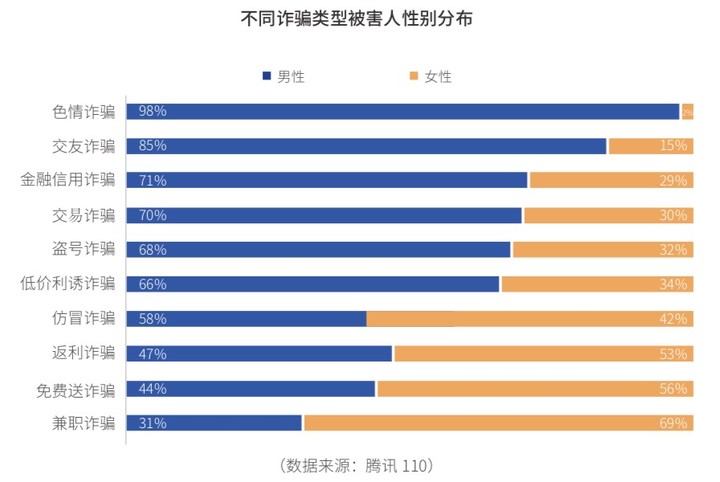From the sale of tea girls on WeChat to the Joe Polo on the live platform, there are more and more tricks on the Internet.
We spend more and more time on social applications, and we are getting more and more strangers, and we will always encounter a few scammers.
Tencent has two social softwares, QQ and WeChat, which have taken over almost half of China’s social network. On August 6th, Tencent released the “Telecom Network Fraud Management Research Report” in the first half of 2019, which revealed the most common types of 10 scams and the 7 characteristics of these scams.

Traffic fraud, part-time fraud, dating fraud, and rebate fraud are the most common types of fraud, accounting for more than 70% of the total.
Traffic fraud refers to the implementation of fraud in the process of commodity trading or on the grounds of providing illegal business, by not shipping, not paying or inducing scanning of payment codes, clicking on fishing links, etc.
In addition, there are low-cost scams, financial credit fraud, phishing scams, pornographic fraud, free scams, hacking, etc. The fraud scenes are quite diverse, and the routines are also aimed at the psychological weaknesses of different groups.

The report shows that the number of male victims of cyber fraud is nearly twice that of women, with 63% and 37% male and female, respectively.
In the two types of sexual fraud and dating fraud, the proportion of males is as high as 98% and 85%. Male victims accounted for more than 70% of financial credit fraud and transaction fraud.

Users in the face of these various kinds of fraud, netizens from Guangdong, Jiangsu, Shandong and other provinces are the most active reports.
Seven characteristics of telecommunication network fraud
The report believes that telecommunications network fraud has seven characteristics in the first half of this year: